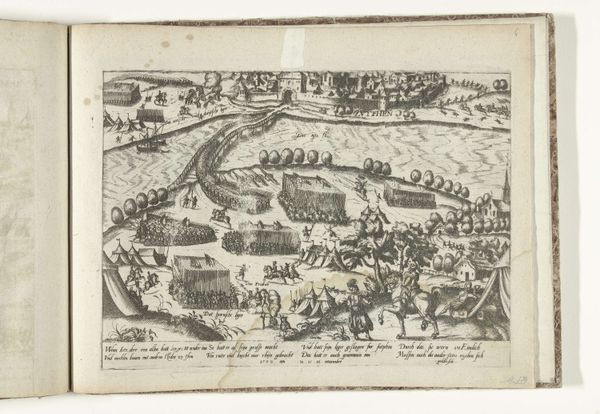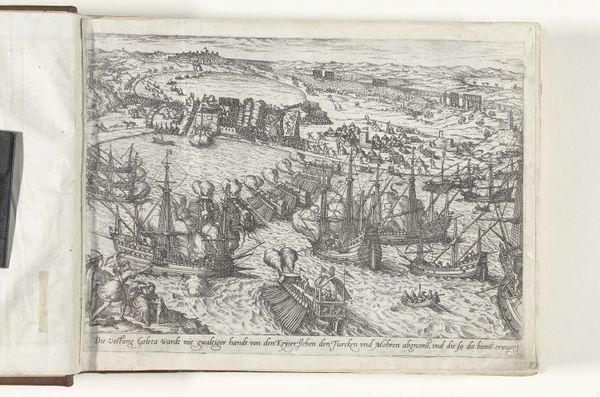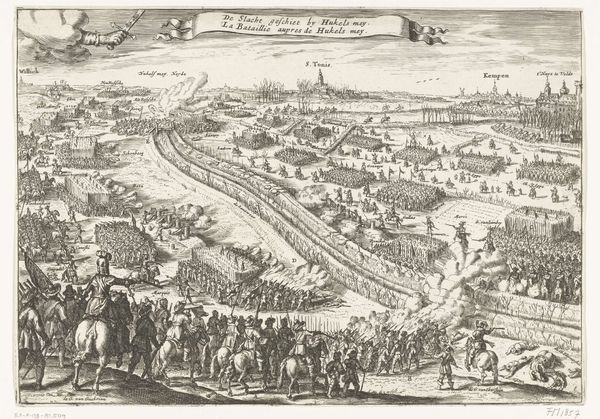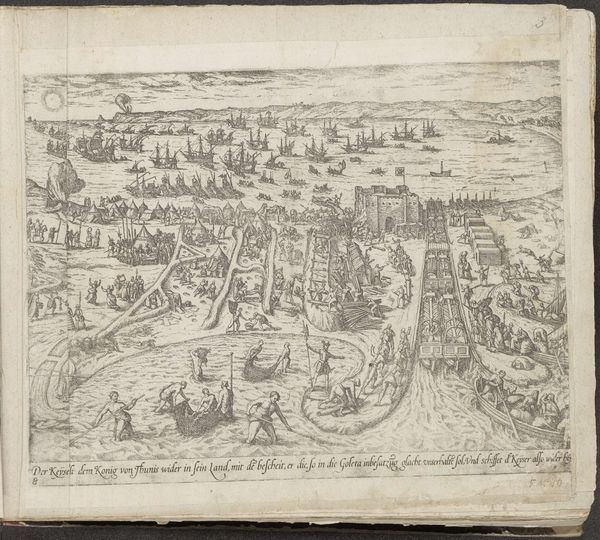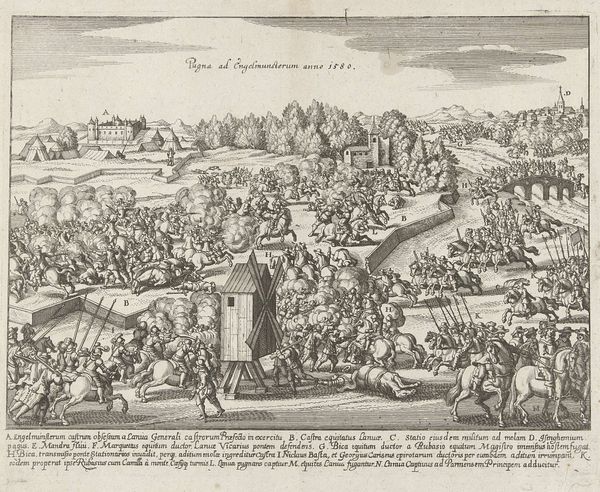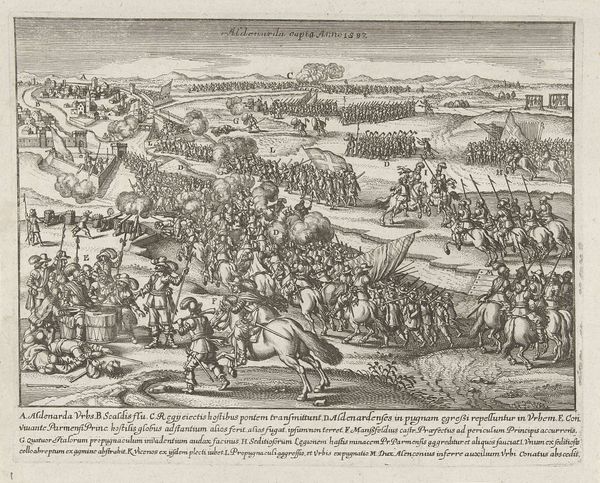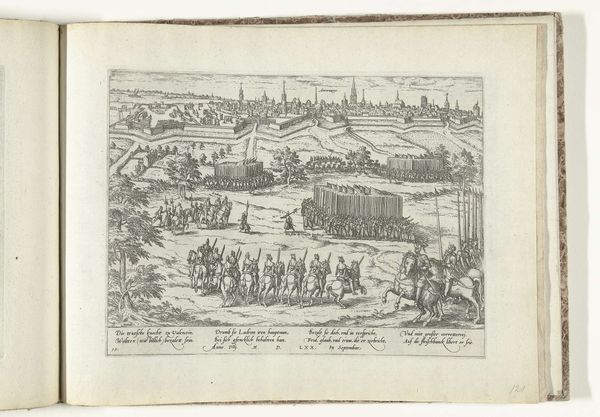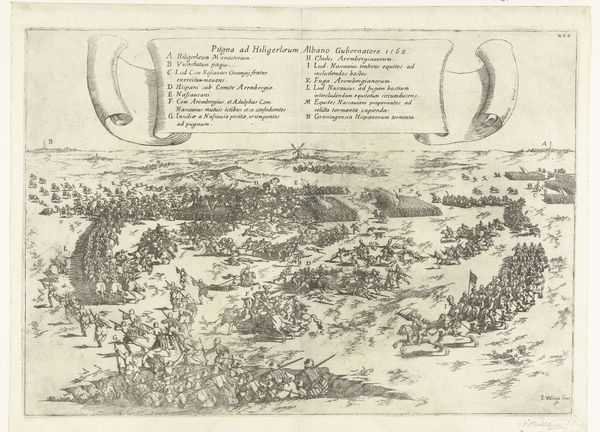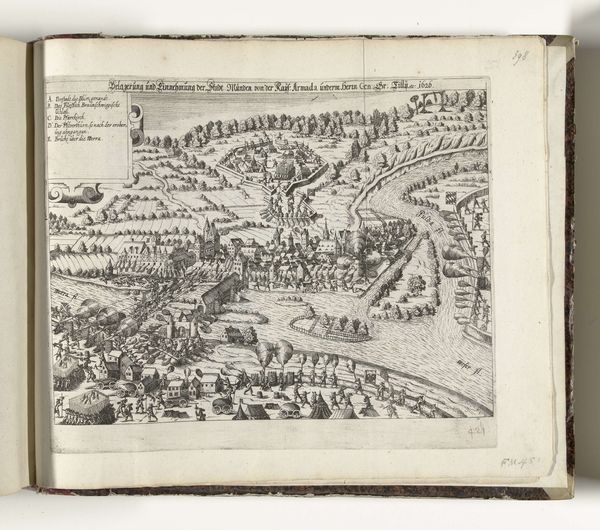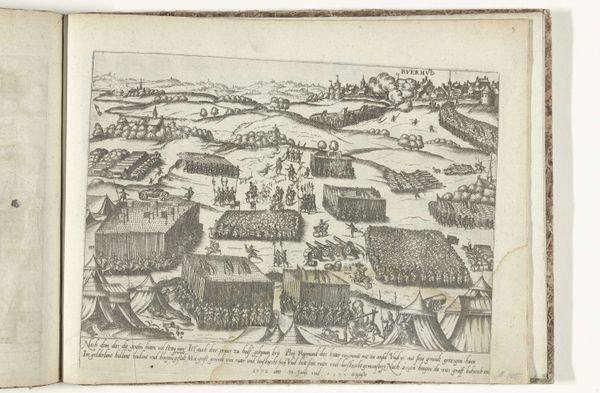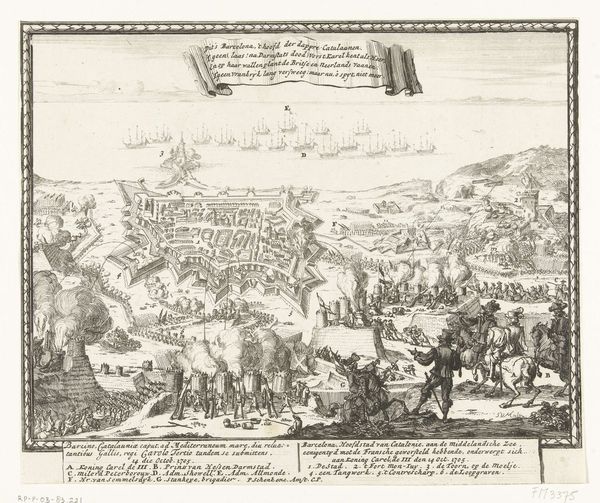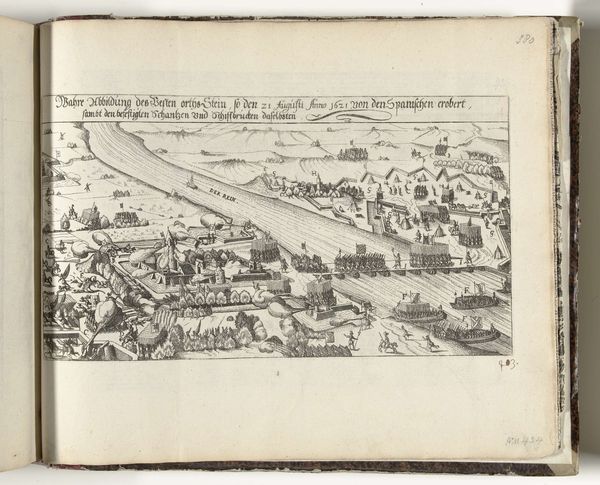
drawing, print, ink, engraving
#
drawing
# print
#
landscape
#
mannerism
#
ink
#
cityscape
#
history-painting
#
engraving
Dimensions: height 246 mm, width 338 mm
Copyright: Rijks Museum: Open Domain
Curator: Before us, we have Frans Hogenberg’s print, "Verovering van Tunis," created between 1574 and 1578, currently held at the Rijksmuseum. It is crafted with ink and engraving techniques, falling stylistically within the Mannerist tradition, capturing both cityscape and historical narrative elements. Editor: My initial impression is a sense of detailed activity within a stark landscape. The high vantage point allows us to observe a busy, almost ant-farm-like scene beneath the looming cityscape. There’s a very striking contrast between the calm and ordered architecture, and the chaotic energy unfolding below. Curator: Precisely, Hogenberg's work, through its symbolic visual language, carries echoes of continuity. The portrayal of conquest taps into a recurring historical theme of territorial struggle and its impacts, wouldn't you agree? Think about how these images circulated in their time, acting almost as propaganda. What sort of cultural memory do such visuals foster? Editor: Definitely propaganda, and visually encoded power. Consider the repetitive arc motif over the siege structure; it mirrors classical Roman architecture, associating the conquering force with historical power and legitimacy, suggesting their actions are preordained or justifiable through history. The symbolic use of arches is incredibly persuasive. Curator: I concur. The city itself looms large, almost indifferent to the activity unfolding before it. This composition subtly conveys power dynamics and historical contexts concerning cultural interactions. Hogenberg utilizes recognizable archetypes – soldiers, captives, leaders – shaping narratives about dominance and subjugation. These scenes aren’t just illustrations but social and political statements. Editor: Indeed, the visual symbolism embedded in the architecture and figures clearly reflects established historical and political power structures, providing insight into the period's social mindset concerning territorial claims. It’s interesting how the human drama plays out beneath a seemingly unshaken cityscape, almost questioning the permanence of any victory. Curator: Absolutely, by intertwining the specificity of the Tunis conquest with more enduring symbolic frameworks, Hogenberg creates a powerful narrative about history's recurring themes and inherent human biases. The layers of context speak to an urgent moment while subtly underscoring its universal relevance. Editor: Thinking about this artwork helps me re-evaluate established narratives on cultural memory and power. Seeing it as a constructed reality, not an unmediated view, deepens my engagement with its visual strategies.
Comments
No comments
Be the first to comment and join the conversation on the ultimate creative platform.
